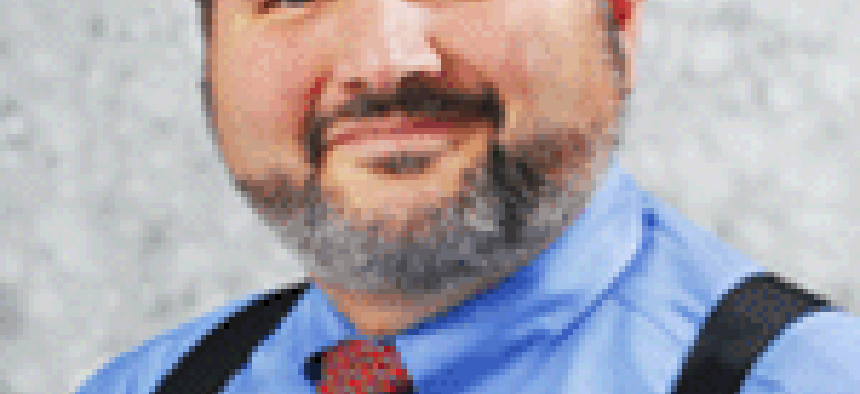Inside Saddam's bunker

Sent Feb. 15, this dispatch from Justin Porto in Iraq slipped through the cracks here at Washington Technology.. Other contractors working in Iraq or other hot spots in the world, should feel free to share their stories. Just Although a little late getting out, Porto's story is still an interesting read:Last Sunday, I descended into the one of the most infamous fortified bunkers in the world. It was custom built for Saddam Hussein.The bunker complex was designed to protect the dictator from an attack as powerful as a nuclear blast occurring 250 yards from the Believer's Palace under which it is built.The Iraqi government will soon tear it down, destroy the bunker and build a hotel.A few months back, I toured the ruins of the Believer's Palace built over the bunker complex, and that was an exciting adventure. You have to know someone who knows someone who works at the Coalition Blackhawk complex.This time, an even more exclusive tour was in store."This is an educational, engineering, professional development staff ride, not a casual tourist stroll," wrote Jim Proctor, a combat engineer and retired Army colonel, who is now a contractor with the Army Corps of Engineers in Iraq. He was in charge and led us on the tour, oops, staff ride.There were some pre-instructions for us."I cannot overemphasize safety during the staff ride ... . This special educational and historical staff ride is a rigorous 2-1/2 hour trek in hot, dusty, hazardous, unsafe and unhealthy conditions," Proctor told us. "Only healthy, physically fit personnel who willingly expose themselves to those risks and accept all responsibility for their involvement may participate."The palace and bunker complex are closed but are available for professional development staff rides as long as safety standards are followed.With this warning and disclaimer still ringing in our ears, our small group of nine began our journey into arguably the most reinforced structure in the world, which surprisingly, was only one story below ground level.Mr. Proctor has spoken to the designer, Herr Esser, a German engineer whose grandmother designed Adolph Hitler's bunker, and asked him why the bunker is so shallow. The answer was simple. The close proximity to the Tigris River (it is a few blocks away in the Red Zone) prevented a deep bunker from being built.That fact became evident later when after descending a spiral staircase, we traversed a long dark tunnel, ascended another staircase, and entered the bunker. Water was rising in the separation spaces between each bunker section.In the three-foot wide space between the bunker compartments are huge shock absorber devices that cushioned each chamber from the massive impact of bunker buster bombs and other technology that the U.S. Air Force had at its disposal in 2003.This palace was the very first target bombed as it was initially believed Saddam and his evil sons were there during the initial stages of the invasion. Although this cannot be verified, and the number of casualties cannot be confirmed, it was learned later that Saddam did not spend much time at this palace, but when he did it was his most secret hideout.We proceeded with strong flashlight beams through a series of rooms for officers, enlisted soldiers, staff and, finally, the living quarters of Saddam and his sons.The remains of the lavish wall paper corresponded to the increased areas of toxic black mold, which was more prevalent, ironically, in Saddam's living space as the wallpaper contained more material for the mold to feed on.The entire bunker had been ransacked and anything of value removed and vandalized by looting Iraqis soon after the palace was bombed and American troops had assured themselves that the bunker was clear of Saddam and his henchmen.On our staff ride, we wore hard hats and quality air filter masks over our mouth and nose to filter out the mold, fine dust and other particles floating in the dank air.The bunker was like a moonscape. As you moved your feet, the dusk slowly rose like smoke, and it was quite a feeling of claustrophobia if you did not reassure yourself that you volunteered to do this.Once we got used to the dark, stagnant environment, we could appreciate what was once a well-planned, well-stocked survival cell for some of Saddam's closest family and leadership.The huge generator plant, water purification facilities and air conditioning units would have allowed Saddam to remain underground, with no surface contact, for up to 90 days. There were even conventional bath and toilet facilities. There was a hot tub off the main living suite that Saddam and his two sons were alleged to have used at least a few times.Because we were told it was OK to salvage anything left due to the impending destruction of the palace, I took a piece of the marble slate that had to have been stepped on by Saddam, and his sons to enter the hot tub.I am sure this will be my most valuable unholy relic of my tour in Iraq.
NEXT STORY: AF cyberstrategy to focus on disrupting attacks

